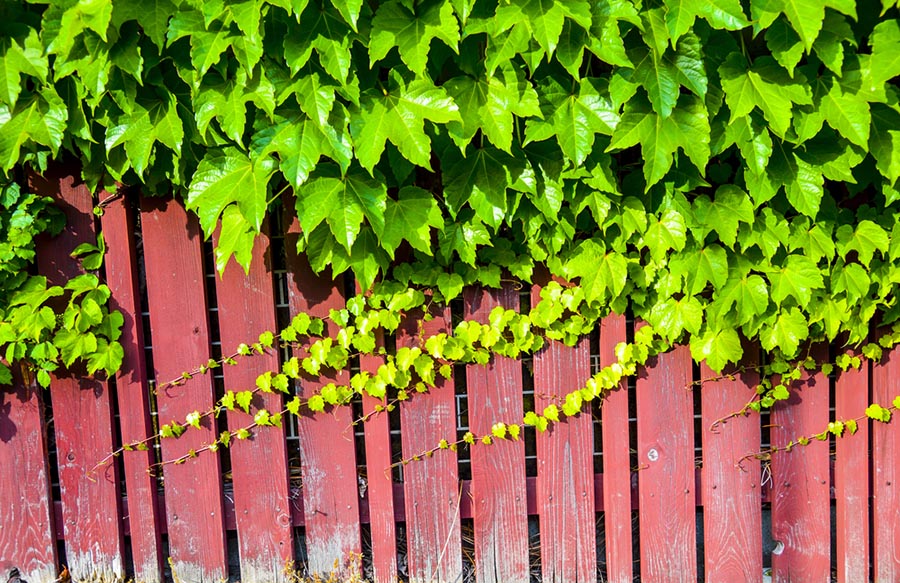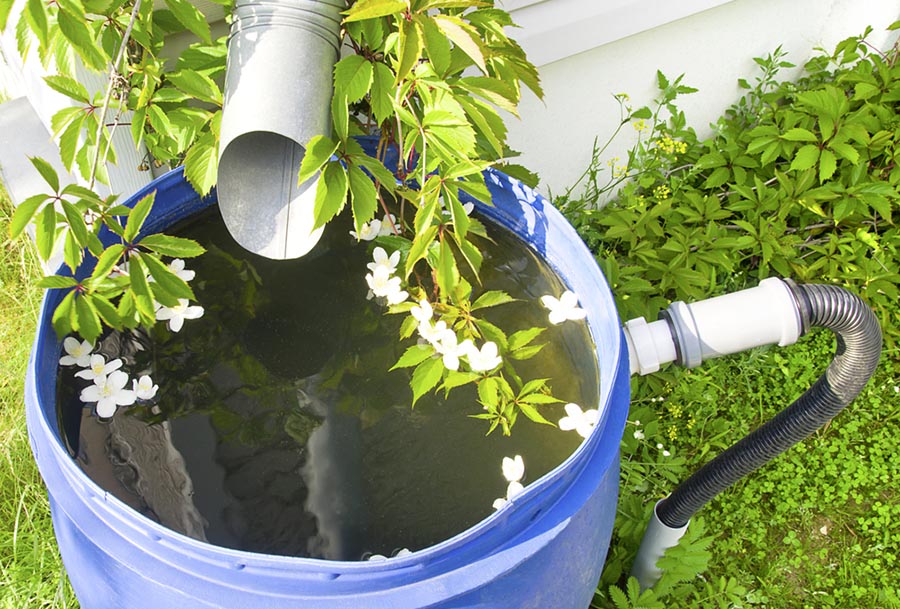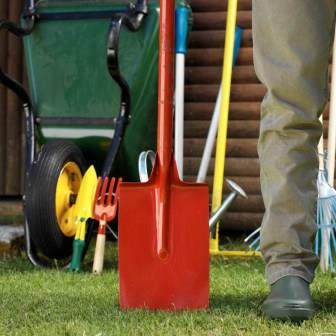The important points
- Most people only think of the indoors when they consider energy efficient homes, but there are energy efficencies to be found in gardening, too.
- Thoughtful placement of greenery can help keep a house cool without needing to use any energy.
Spring lawn and garden tasks
Lawn preparation
Rake: give the lawn a stiff rake when it is not too wet. This will stir up the ground, allowing room for air, water and nutrients to reach the grass plant roots.
Mow: with your lawn mower, make the initial cut a little shorter and then don’t take more than one-third of the grass length off with subsequent mowing sessions. It is important to stay on top of the lawn by mowing two to three times per week, alternating mowing direction to keep the grass plants growing straight.
Aerate: after winter, the lawn has become compacted from snow and frost. Aerating cuts finger-sized holes into the ground to allow deeper penetration of fertilizer, nutrients, and water.
Over-seed: over-seeding your lawn every year will keep it looking full and green. Just don’t put the seed down too early. Hold on until temperatures have reached 12 degrees. In addition, the seed will need moisture and sunlight to germinate. If you observe dead patches of grass, remove and replant with sod or seed.
Fertilize: perhaps the most important step to take to ensure a healthy and lush lawn, fertilizing gives your grass the balanced nutrition it needs to grow. Once the snow is gone, and the lawn has started to green up, it is fertilizer time. Using a weed and feed product will not only give the grass plants the nutrition they need but will also help keep a weed-free lawn. Just be certain to read the instructions carefully and not over-fertilize.
Water: it is important to water your lawn regularly throughout the season. Infrequent but thorough watering sessions are more beneficial than frequent shallow ones.
Garden Preparation
Weeding: remove weeds from your garden beds while the soil is still moist. They will slip out more easily than in dry conditions. Get the weeds under control in the spring and you will save yourself a lot of weeding time in the summer while preserving the soil’s nutrients for your plants.
Till the soil: similar to your lawn, the soil in your garden has become compacted with the winter elements. Tilling the soil allows air circulation and water to reach deeper levels. In established flower gardens, tilling may not always be necessary as earthworms happily do the work for you.
Compost: as soil settles and decomposes, it loses some of its nutrients. Topping up flower beds with compost or topsoil will help replace lost nutrients. This is particularly valuable for vegetable gardens.
Mulch: mulching is often an overlooked step in the garden, and it has many proven benefits. These include keeping the soil cool and moist in the summer, reducing the chances of root burn caused by dry conditions. Mulch also helps prevent the growth of weeds by blocking sunlight.
Planting: while traditional spring planting doesn’t start until May when garden centers line their shelves with annuals, anxious gardeners may start to give their gardens and planters some color with pansies, violets, and primulas. This is also a great time to begin indoor seeding for vegetable plants and sunflowers.
Take the time in the spring to properly prepare your garden and lawn and you will reap the benefits all summer. Just think, weeding and fertilizing now will mean more time for a cold drink and a good book in the hammock.
Creating an energy efficient garden
Now that your garden and yard are prepped and ready for the remainder of spring and summer, let’s go over some tips for creating an energy efficient garden.
No matter whether your home is designed to be energy efficient or not, you can create an outdoor landscape that will affect its energy efficiency. The proper use of trees, shrubs, groundcover, and vines can help insulate against heat loss during cold weather and provide cooling shade during the warmer times of the year. Not only is such landscaping practical, it’s also aesthetically pleasing.
As you create a landscaping plan, the first step is to identify the climate zone for your area. Different plants are suited to the various zones, and you don’t want to waste time with those that won’t flourish. Why plant an oak tree when the climate cries out for a birch tree? The federal government has an excellent site here that showcases climate zones and plant hardiness.
Creating shade

Trees should be your first consideration. Well-placed trees can reduce the air-conditioning bill for a previously unshaded house by 15 to 50 per cent and may cut heating bills by up to 30 per cent. In addition, the air temperature difference under a shade tree compared to a nearby asphalt driveway can be 25 degrees.
As long as they’ll thrive in your climate zone, both deciduous and evergreen trees have roles to play in assisting with your home’s energy efficiency. In winter, trees provide an effective windbreak, protecting your home from the cold north and northwest winds by slowing and dispersing them. Evergreens densely planted in rows make the best windbreaks and should be sited to the north of your home, as well as the east and west. The density of the windbreak is more important than its height.
In warmer weather, deciduous trees are the key to cooling your home. Their profusion of leaves and spreading branches cast welcome shade on the sides and roof of a house. If they are planted on the southern side of the house, they can keep up to 90 percent of the summer sun away. In the winter, they lose their leaves, so more of the warming sun can reach the house.
In addition, be sure to shade your air-conditioner and your windows with trees, vines or awnings. Shading the compressor can increase the unit’s efficiency by 10 percent, while the heat coming through windows affects indoor temperatures more strongly than that entering through insulated walls. Shade can make a big difference.
Use climbing vines

It may take time for the trees that you’ve planted on your property to grow to maturity and shade the house properly. Don’t despair; there are other options that can have an impact in the interim.
Climbing vines that grow up trellises help shade window and walls. The same goes for pergolas and arbours. Permanent structures and perennial vines work best in warm climates where their sun blocking isn’t a problem in winter. Annual vines and moveable trellises are more practical in cooler climates where they can be taken down and stored during the colder months.
You can provide good cover and food at the same time by using vines that produce edible products, such as scarlet runner beans or winter squashes. If you live in a wet, humid area, be sure to locate the trellises at least one-third metre from the house to allow air to circulate properly and keep the soil and walls dry.
Energy efficiency with your lawns and gardens

A green lawn and a colourful garden may be your pride and joy during the temperate months, but don’t overuse valuable water to keep them looking sprightly. Surround your plants and trees with a layer of mulch that can trap water and prevent it from evaporating. Water lawns and plants during the coolest times of day so the bulk of the water doesn’t evaporate in the sunshine.
You can also collect water with a rain barrel to reuse in the garden. You’ll benefit the environment and reduce your water bill at the same time.
Cutting back on the use of pesticides is also beneficial to the environment. Consider using natural methods instead. Introducing ladybugs to your garden will reduce the aphid population, since the ladies snack on them. Certain plants act as natural pesticides; marigolds, for example, repel beetles.
Plants for your garden and yard
Spring is the time when we can really get back to the earth. It’s fun to plant some flowers and get your hands dirty whether you have a garden, a flower bed, or some pots on your deck or balcony. If you’re a relatively new gardener, you may need a bit of help getting started. Here are some tips for selecting and planting your bedding plants:
Selection tips
Choose fresh, healthy plants, avoiding any with yellowed leaves. Yellowing could indicate permanent damage due to under watering.
Select plants in trays with deep compartments spaced as far apart as possible. These deep compartments help the plants retain moisture and grow larger root systems.
If you’re impatient and want beautiful, showy flowers right away, select plants grown in larger pots. Larger plants with more established roots adapt faster to transplanting.
Do a little research before you buy your plants. Find varieties that are suited to the growing conditions in your garden or on your deck. Your plants will fare better if you put the right ones in the sunny or full shade areas.
Plant a bit of garlic, lemon balm, chives and marigolds around your other flowers and veggies. Insects don’t like them!
Planting tips
Mix some compost into the soil to add lots of great nutrients. You can create your own compost, or you can buy it from various garden centres. There are different kinds for different uses, so be sure to talk to the experts to get the right type for your specific needs. The City of Vancouver sells compost produced from the yard and garden waste they collect from Vancouver homes. Check in your own municipality!
Plant them early or late in the day when it’s not too hot.
Water all plants thoroughly in their pots before planting.
Make a hole a little larger than the base of the plant and add water.
Gently tap the plant out of its pot, push it into the prepared hole, and tamp the surrounding soil.
Sprinkle fertilizer around the plants, then water.
Water the flowers whenever the ground appears dry during the first few weeks.
Encourage those earthworms! Earthworms are very valuable in your soil, so always use natural fertilizers.
Stop dumping your cooking water down the drain! After you boil your pasta or steam your veggies, use this nutrient-rich water on your plants, rather than dumping it down the drain. Of course, let it cool first, and don’t use salted water.
Keep your plants portable. If you want to move your potted plants around to make different areas of your yard or deck look particularly inviting, keep your pots light-weight by putting some foam peanuts in the bottom of the pot, before putting in your soil.





